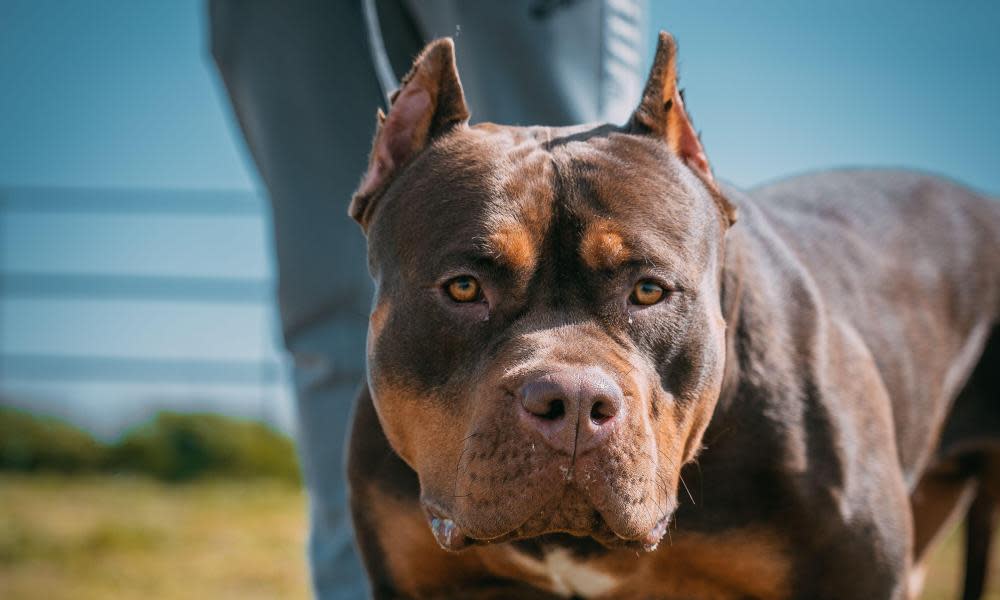Banning some dog breeds in the UK won’t stop attacks on humans

Dog bans are back on the discussion table, with Suella Braverman declaring American bully XL dogs are a “clear and lethal danger to our communities, particularly to children”.
The home secretary’s intervention follows an attack on an 11-year-old girl in Birmingham, in which two men were also injured. Police have confirmed that the animal was a bully XL crossed with a Staffordshire bull terrier, and Braverman has said she is seeking urgent advice on outlawing the animals. But experts claim that doing so is ethically dubious, and unlikely to significantly reduce dog bites.
Bully XLs are a relatively new breed of dog, which means their risk of biting hasn’t been scientifically studied. Standing up to 50cm tall, and weighing as much as 60kg, they certainly attract attention, but bully XLs are not recognised as a specific breed by the UK Kennel Club, and it is unclear precisely which breeds they have descended from – although they are likely to have included pit bull terriers, American bulldogs and American Staffordshire bull terriers.
Related: Mother of boy killed by out-of-control dog criticises UK ministers for failing to act
According to Bully Watch, a campaign group aiming to raising awareness of pit bull-related dog attacks, such breeds have been responsible for 351 attacks in the UK this year alone. However, they are not the only dogs implicated in recent fatal attacks – with rottweilers, a husky and a Cane Corso (a type of mastiff) also having killed people in the UK in the past three years – and trying to pin aggression on specific breeds is fraught with difficulty, scientists say.
What research has been done suggests a dog’s behaviour is more influenced by its nurture than its nature. In one recent study, researchers compared behavioural tendencies such as impulsivity and sensitivity to positive and negative stimuli – known to trigger aggressive responses – between eight dog breeds that are legislated against (including pit bull types), and 17 breeds that are not. This suggested that breed alone was a poor predictor of individual behavioural tendencies, including those related to aggression.
“Whilst on average, there might be differences between one breed of dog and another, the variation within a breed almost always means there’s overlap,” said Daniel Mills, a professor of veterinary behavioural medicine at the University of Lincoln, who led the research. Suggesting that certain breeds are more problematic than others was “an oversimplification, it is headline grabbing, and it is unhelpful”.
Related: Should American bully XLs really be banned? | Zoe Williams
That’s not to say genetics don’t have any role to play. For instance, about 20 years ago there was a particular line of golden retrievers that were very aggressive as puppies. However, “people weren’t going to suddenly start banning golden retrievers”, Mills said.
Carri Westgarth, a professor in human-animal interaction at the University of Liverpool, agreed that across dog breeds, certain breeding lines tended to have puppies that were more prone to aggression. However, this isn’t just about genetics, she said, adding: “If the mother was stressed when she was carrying the puppies, those stress hormones will predispose the puppies to be more fearful and reactive.”
How puppies are initially socialised also matters – something owners may have little control over, as this is often in the dog breeders’ hands.
Also muddying the water, is the fact that XL bullys and other powerful dog breeds may be more desirable to certain types of individuals. “Whereas a lot of owners will look to socialise their dog to make sure that they get on well with people, for some owners having a dog that growls at people does their ego a lot of good,” said Mills, adding that this didn’t apply to all bully XL owners.
All that being said, it is true that the majority of dogs that are involved in fatalities tend to be large and powerful. Dogs’ biting styles also vary by breed, with some more likely to tear at flesh and bone than others.
So, should we ban more of these large and powerful breeds? Westgarth worries that new breeds would simply fill the gap, as has happened with bully XLs following the UK ban on pit bull terriers, Japanese tosas, dogo Argentinos and fila Brasileiros.
Banning such breeds also implies that others are safe, when the reality is that any dog can bite severely.
“Although you do occasionally get unprovoked attacks, the vast majority of dog attacks are due to irresponsible ownership, irresponsible owner behaviour, or irresponsible behaviour around dogs,” Mills said.
Better than breed-specific bans would be a concerted effort to tackle poor breeding practices and to improve education about how to have safe interactions with dogs; how to train them effectively, avoiding punishment-based methods that are associated with greater fear, stress and aggression; and the introduction of social norms such as never leaving children alone with dogs, Westgarth suggested.
Dogs are also more likely to bite if they are not getting enough exercise, if they are in pain or discomfort, or their needs aren’t being met in other ways, she said: “We’re very poor at recognising when dogs are feeling overwhelmed and stressed and would rather not be in that particular situation. Often we only listen when they start growling and snapping at us.”

 Yahoo News
Yahoo News 
